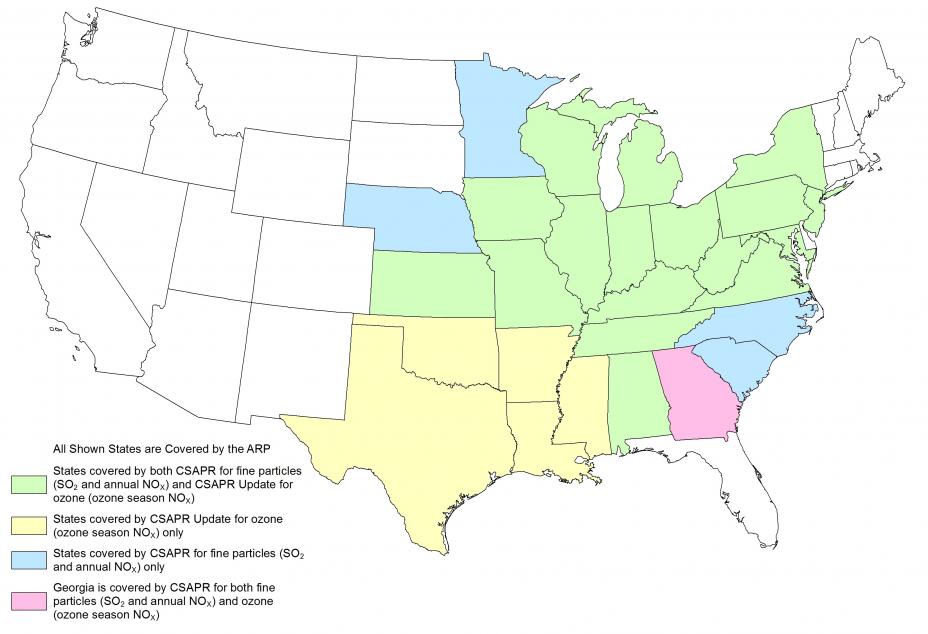Clean Air Markets Programs

Clean Air Markets Programs are regulatory programs that improve air quality and public health, by reducing air pollution from large stationary sources such as power plants. These programs lower outdoor concentrations of fine particles, ozone, sulfur dioxide (SO2), nitrogen oxides (NOx), mercury, and other significant air pollutants. Clean Air Markets programs have delivered substantial emission reductions and air quality improvements since the first nationwide emissions trading program, the Acid Rain Program, which began in 1995.
- Learn more about emissions trading programs.
Current Programs
- EPA finalized an update to the CSAPR ozone season program for the 2008 ozone NAAQS
- The Cross-State Air Pollution Rule requires 28 states to reduce power plant emissions that contribute to ozone and/or fine particle pollution in other states. This rule was intended to replace the Clean Air Interstate Rule.
- The Acid Rain Program began in 1995 and required reductions in emissions of SO2 and NOx (the primary causes of acid rain) from power plants.
Learn more about the results of these programs.
Retired Programs
- The Clean Air Interstate Rule began in 2009 and capped emissions of SO2 and NOx in the eastern United States. This program ended January 1, 2015.
- The NOx Budget Trading Program was created under the NOx SIP Call. Beginning in 2003, it was designed to reduce the transport of ground-level ozone in the eastern United States and was effectively replaced by the CAIR Ozone Season NOx program in 2009. Learn more about the NOx SIP Call.
- The Ozone Transport Commission NOx Budget Program began in 1999 in the northeastern United States, and was intended to reduce summertime NOx emissions. It was effectively replaced by the NOx Budget Trading Program under the NOx SIP Call in 2003.
Related EPA Programs
Related EPA Tools and Resources
- EPA Power Sector Modeling is a key modeling tool for helping to evaluate the economic impacts of environmental programs on the electric power sector.
- Air Markets Program Data on emissions and operations of sources affected by regulatory programs can be accessed through reports, queries, maps, charts, or file downloads.
- Emissions & Generation Resource Integrated Database (eGRID) is a comprehensive source of data on the environmental characteristics of almost all electric power generated in the United States, including air emissions for nitrogen oxides, sulfur dioxide, carbon dioxide, methane, and nitrous oxide; emissions rates; net generation; resource mix; and many other attributes.
- The U.S. Greenhouse Gas Emissions Inventory is an annual collection of data on the primary anthropogenic sources and sinks of greenhouse gases, including carbon dioxide (CO2), methane (CH4), nitrous oxide (N2O), hydrofluorocarbons (HFCs), perfluorocarbons (PFCs), and sulfur hexafluoride (SF6).
- EPA’s online data publication tool, called Facility Level Information on GreenHouse gases Tool (FLIGHT), allows users to review information quickly and easily by filtering greenhouse gas emissions data from large facilities in a variety of ways including by facility, industry, location, or gas.
- EPA’s AVERT is a free tool with a simple user interface designed to meet the needs of state air quality planners and other interested stakeholders.

